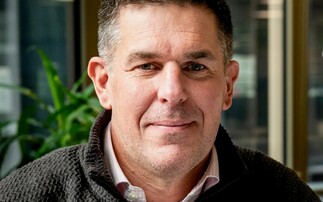
On top of a compelling return, the northern European lower mid-market senior secured segment offers less downside risk and one of the best legal environments to negotiate any restructurings.
Direct lending may be classified as an ‘alternative' investment, but in many ways it's now part of the mainstream. Since 2015, direct lenders have raised US$288bn[1], as investors sought yield in a low interest rate environment; attracted by its low volatility, limited correlation to other asset classes, and the cash income provided by underlying loans.
The macro backdrop today is, of course, uncertain, as the market frets over higher-for-longer rates and geo-political event-driven volatility. Does an allocation to direct lending still make sense?
At Federated Hermes, we believe it does – if investors focus on the right segment. And in this paper, we are going to outline the arguments why.
We believe the best opportunities in the asset class can be found in the northern European[2] senior secured lower mid-market segment[3]. It's an area where investors can reasonably anticipate an all-in yield of approximately 903bps[4].
When calculating the yield of a loan, there are three core income components: the base rate, the margin and the upfront fees – all of which feed through to the underlying gross return of a direct lending fund.
The base rate for European loans (Euribor) was 371bps as at 30 June 2024[5]; up from negative 18bps at the same time two years earlier[6].
As central banks have hiked interest rates, the floating rate component of the yield has followed suit, up 389bps over a two-year period[7], allowing investors a level of protection against rising inflation levels. It's a trend that should continue as elevated interest rates persist.
In addition, macroeconomic uncertainty, driven by geopolitical tensions and low economic growth, has encouraged lenders to adopt a ‘risk-off' approach. Many lenders now command an additional premium of approximately 40bps on the margin charged on a loan of equivalent risk levels in the pre-positive Euribor environment. As a result, the average European senior secured margin is approximately 453bps[8].
There are, of course, a range of ‘average' margins depending on which geography you analyse, but the aforementioned figure is a blended northern European margin.
Typically, you would expect to obtain the highest margin level in the UK, followed by Scandinavia, Germany, the Netherlands and then Belgium.
Further to this, the upfront fee, a ‘work fee', received by lenders on the day they fund a loan, has increased steadily, and lenders are now receiving an average of 239bps[9].
What makes this level of return more compelling in the current market environment, is the potential for a reduced risk-return profile; as well as the improved protection mechanisms for senior secured direct lenders operating in the lower mid-market.
This can be seen in the increased yield per turn of leverage, which shows that lenders are yielding substantially more at a lower risk entry point. Over the last two years[10], we can see that the yield per turn of leverage[11] has increased almost two-fold from 1.35% to 2.53%. While yields have increased materially, the risk-off nature in the market has also seen the average leverage levels come down from 3.9x to approximately 3.5x.
The value of investments and income from them may go down as well as up, and you may not get back the original amount invested. The views and opinions contained herein are those of the author and may not necessarily represent views expressed or reflected in other communications. This does not constitute a solicitation or offer to any person to buy or sell any related securities or financial instruments. Issued and approved by Hermes Investment Management Limited which is authorised and regulated by the Financial Conduct Authority. Registered address: Sixth Floor, 150 Cheapside, London EC2V 6ET.
[1] Source: Deloitte Private Debt Deal Tracker Spring 2024.
[2] Northern Europe equates to Denmark, Sweden, Finland, Norway, UK, Ireland, Belgium, Netherlands, Germany.
[3] The lower mid-market segment typically involves loans less than €35m EBITDA.
[4] Source: Federated Hermes, July 2024. Indicative or anticipated performance is not a reliable indicator of actual and future performance.
[5]Source: Euribor rates: https://www.euribor-rates.eu/en/current-euribor-rates/2/euribor-rate-3-months/
[6] Ibid
[7] Ibid
[8] Ibid
[9] Margin and upfront fee data is per the Federated Hermes Direct Lending database of introduced and completed European middle market transactions.
[10] Using the average leverage and yield for all transactions originated by Federated Hermes' mid-market direct lending funds over the last two years to June 2024.
[11] Turn of leverage is a financial metric that measures a company's ability to manage and service its debt.






